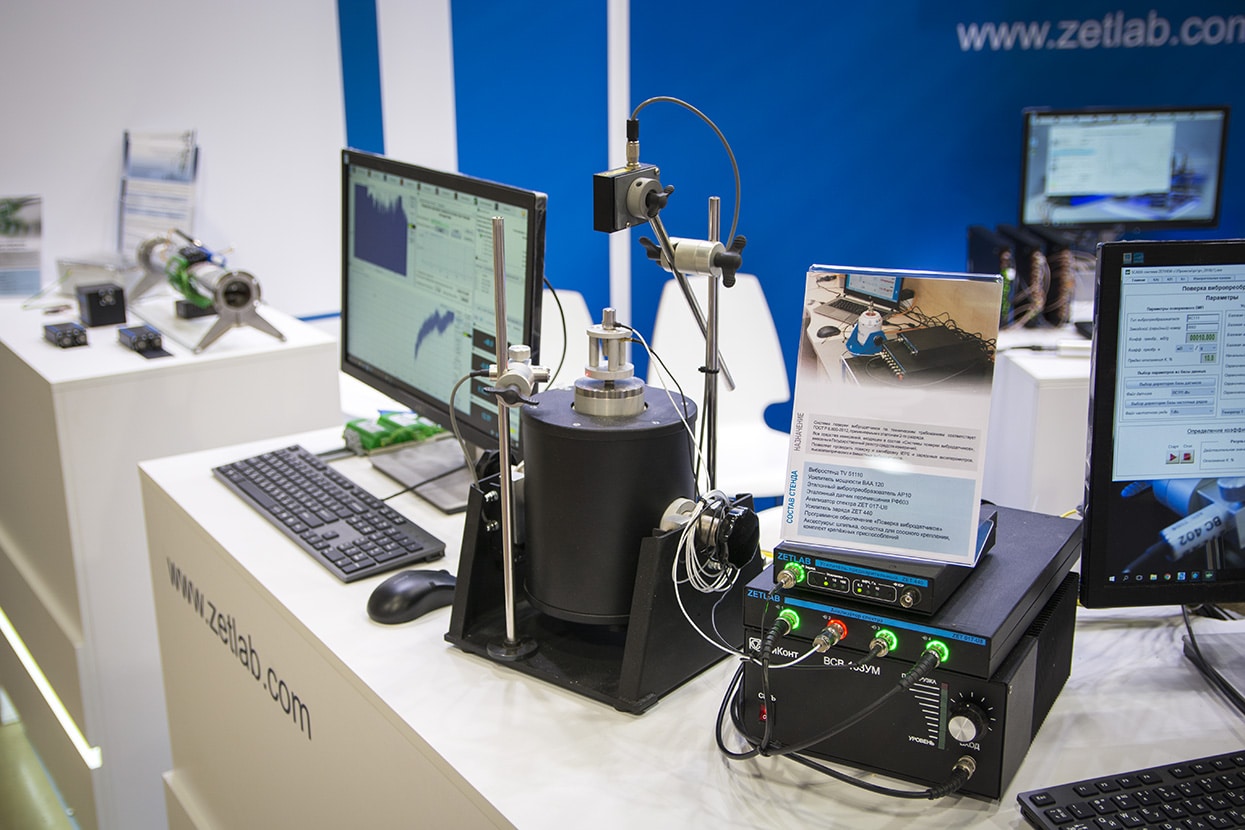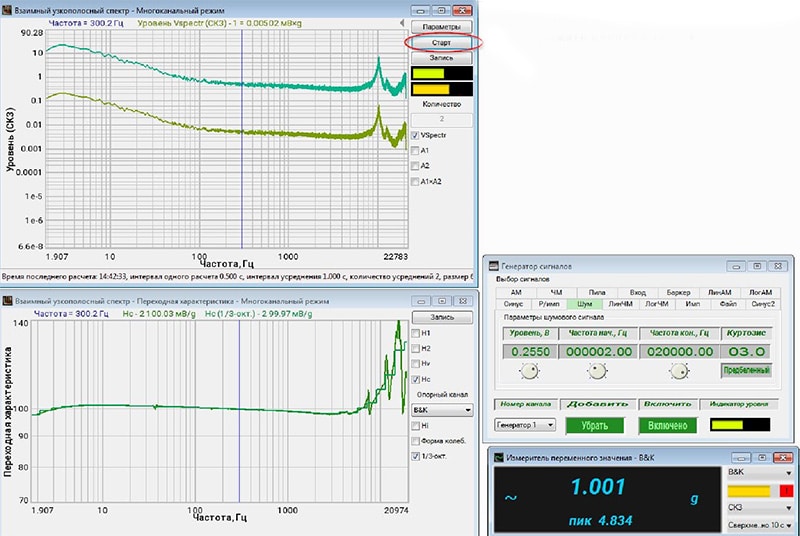Vibration calibration of vibration transducers by means of comparison to the reference transducer
in compliance with ISO 16063-21
Calibration of vibration transducers is an integral part of metrological control in the sphere of unifromity of measurements. It allows to find out the ratio of readings between the reference transducer and the transducer to be calibrated, as well as to obtain the uncertainty level during the calibration process.
International standards describe a lot of calibration methods to be used for calibration of vibration and shock transducers. However, today we are going to consider just one of them, in particular, ISO 16063-21 “Vibration calibration by comparison to a reference transducer”.
The procedure of transducer calibration takes a lot of time and effort, hence, the calibration laboratories have to look for instruments, which would accelerate the calibration process without deterioration of measurements accuracy.
Calibration system of vibration transducers by ZETLAB Company is a user-friendly system allowing to accelerate the calibration of the vibration transducers in a wide frequency range, as well as to perform the calibration process in an accelerated mode.
Components of the calibration system
Calibration system of the vibration transducers by ZETLAB Company is represented by a hardware and software system, which includes the following components:
- reference vibration transducer to be selected in compliance with the customer’s needs depending on the required characteristics;
- shaker system – to be selected in compliance with the customer’s needs depending on the required characteristics;
- shaker controller ZET 034 – FFT Spectrum analyzer of vibration acoustic signals, which can be used for generation of signals (FFT Spectrum analyzers of ZET 032 and ZET 038 can also be used);
- Charge amplifier ZET 440 – conditioning instrument to be used for amplification and conversion of the input signals received from piezo-electric primary transducers with integrated ICP into voltage;
- task-specific software for automation of the characteristics evaluation process based on cross-spectrum FFT analysis.

Operating principles
The reference transducer and the transducer to be calibrated are mounted back-to-back, or along the same axis of the shaker extension head. However, at the frequencies over 5 kHz the calibration can only be performed if the back-to-back mounting technique is used. FFT Spectrum analyzer of the vibration acoustic signals ZET 034 generates the signal to be used for operation of the shaker system and it is also used for measurements of the output signals received from the reference transducer and the transducer to be calibrated.
In compliace with ISO 16063-21, it is also possible to use a random oscillations generator and a frequency analyzer. ZET 034 can also be used for both of these functions. This method is a preferable one, since it allows to reduce the time required for the calibration process due to extended range of the available frequencies. The software used for the calibration is based on the cross-spectrum analysis techniques. The measurements results is based on the transient characteristic Hc (evaluation of the frequency response between two output signals of the system).

The measurements results are automatically converted into calibration protocol form. The user just has to add the information concerning the ambient environment conditions, the technique used for mounting of the vibration transducers, and parameters of the amplifier (in the case, if it used for the calibration process performance).
Conclusions
The represented system allows to reduce the time required for the calibration process, and to increase the efficiency of the calibration laboratory without the need to implement overall upgrade of the instruments used.
The system is intended for securing the uniformity of measurements, which, in its turn, is the main goal of metrology.
References
1. ISO 16063-21-2013 Vibration. Methods for the calibration of vibration and shock transducers. Part 21. Vibration calibration by comparison to a reference transducer.
2. Anders Brandt «Noise and Vibration Analysis: Signal Analysis and Experimental Procedures», 2011, ISBN 978-0-470-74644-8.
3. IEC 61260:1995 – Octave-band and fractional-octave-band filters. Technical requirements and test methods.
